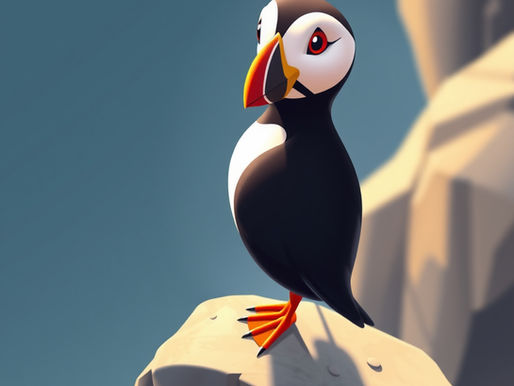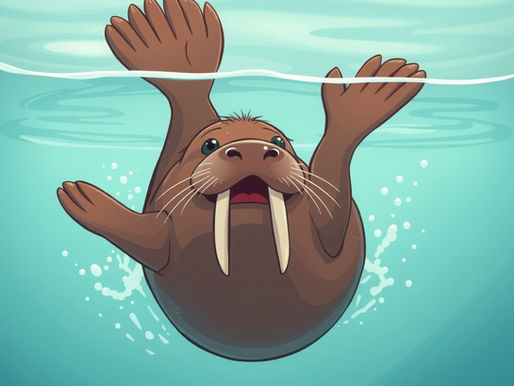top of page
Substitute Teacher Blog
Substitute Teacher Tips, Lesson Plans, Fun Facts, Worksheets, and Activities


Funding Opportunities for Austin Childcare Centers
A guide to local, state, and federal programs supporting early childhood education in Austin, Texas. Austin’s childcare landscape is undergoing a major shift. With new investments from Travis County , the City of Austin , and the Texas Workforce Commission (TWC) , more public funding is available now than at any time in the past decade. If you operate a childcare center, preschool, or home-based program in Austin, here’s how to navigate the current funding environment and pos
1 day ago3 min read


Unique Puffin Fun Facts for Kids: The Ocean's Colorful Clowns
Puffins are some of the most adorable and fascinating seabirds on Earth! With their colorful beaks, tuxedo-like feathers, and clumsy charm, these amazing birds look like they flew straight out of a cartoon. Whether you're a student working on a bird project, a teacher looking for engaging animal facts, or just someone who loves learning about incredible wildlife, get ready to discover the wonderful world of puffins! What Is a Puffin? Puffins are unique seabirds that belong t
4 days ago4 min read


Amazing Electric Eel Fun Facts for Kids: Nature's Living Lightning Bolts
Electric eels are some of the most shocking creatures in the animal kingdom—literally! These amazing fish can generate enough electricity to power a light bulb or stun a horse. But despite their name, electric eels aren't actually eels at all. Whether you're working on a science project, teaching about amazing animals, or just love learning about nature's most incredible creatures, get ready to discover the electrifying world of electric eels! What Is an Electric Eel? Electri
Nov 54 min read


Amazing Starfish Fun Facts for Kids: The Ocean's Five-Armed Superstars
Starfish might look like simple sea creatures, but they're actually some of the most incredible animals in the ocean! With their five arms, amazing regeneration powers, and unique way of eating, these fascinating creatures are full of surprises. Whether you're a student, teacher, or just someone who loves learning about marine life, get ready to discover the amazing world of starfish! What Is a Starfish? Starfish are some of the most unique ocean animals you'll ever learn ab
Nov 34 min read


Surprising Cuttlefish Fun Facts for Kids: Masters of Ocean Disguise
Meet the cuttlefish—one of the ocean's most incredible shape-shifters and color-changing masters! These amazing sea creatures might look like squid or octopus, but they're actually in a class of their own. With their ability to instantly change colors, hypnotize prey, and solve puzzles, cuttlefish are like underwater magicians that will blow your mind. Whether you're working on a marine biology project or just love learning about fascinating ocean animals, get ready to dive i
Nov 24 min read


Seahorse Facts for Kids: The Ocean's Most Magical Fish
Seahorses are some of the most enchanting and mysterious creatures swimming in our oceans! With their horse-like heads, curly tails, and upright swimming style, these magical fish look like they swam straight out of a fairy tale. But don't let their delicate appearance fool you...seahorses are incredible survivors with some of the most amazing superpowers in the animal kingdom. What Are Seahorses? Seahorses are truly unique fish that break all the rules of what we think fish
Nov 24 min read


Amazing Tardigrade Fun Facts: Water Bears That Survive Space!
Meet the tardigrade—the toughest, tiniest animal on Earth! These microscopic creatures look like little bears with eight legs, but don't let their cute appearance fool you. Tardigrades are basically indestructible superheroes that can survive in outer space, extreme heat, freezing cold, and even nuclear radiation. Whether you're working on a science project or just love learning about amazing animals, get ready to discover the incredible world of water bears! What Are Tardigr
Oct 154 min read


Amazing Platypus Fun Facts for Kids: Nature's Weirdest Mammal
The platypus might be the strangest animal on Earth! With its duck bill, beaver tail, and ability to lay eggs, this amazing creature...
Oct 74 min read


Surprising Fun Facts About Walruses for Kids: Walrus Size, Diet, Weight
Walruses are some of the most impressive and fascinating marine mammals on Earth! With their massive tusks, wrinkled skin, and incredible size, walruses have been ruling the icy Arctic waters for thousands of years. Whether you're a student, teacher, or just someone who loves learning about nature's most amazing giants, get ready to dive into the incredible world of walruses! Where Do Walruses Live? Walruses live in the cold Arctic waters of the northern hemisphere, where th
Oct 63 min read


Amazing Octopus Fun Facts for Kids: 8-Armed Ocean Geniuses
Octopuses are some of the most incredible and mysterious creatures living in our oceans! With their eight squiggly arms, amazing...
Oct 44 min read


Fun Facts About Frogs for Kids
Frogs are some of the most amazing and adaptable creatures on Earth! With their incredible jumping abilities, unique life cycles, and...
Sep 293 min read


25 Fun Facts About Jellyfish for Kids + Immortal Jellyfish Facts
Jellyfish might look like floating blobs, but they’re some of the most fascinating creatures in the ocean! With their wobbly bodies,...
Sep 283 min read


Fun Facts About Turtles for Kids
Turtles are some of the most amazing and ancient creatures on Earth! With their protective shells, slow and steady pace, and incredible...
Sep 264 min read


18 Common Elementary Grammar Mistakes (and How to Fix Them)
Learning grammar is a journey, and mistakes are a natural part of the process. Kids are experimenting with language all the time, and while their slip-ups can be cute (and sometimes funny!), they’re also great opportunities to teach. Below are 20 common grammar mistakes children often make—and simple strategies for helping them improve. Grammar Mistake 1: Confusing “Your” and “You’re” ❌ Your my best friend. ✅ You’re my best friend. 👉 Tip: Teach them that “you’re” is short fo
Sep 243 min read


Funny This or That Questions for Kids
Sometimes you just need a quick game to get kids talking, laughing, and connecting. That’s where This or That questions come in. They’re...
Sep 162 min read


Cloud Fun Facts for Kids: Learn About the Types of Clouds
Look up at the sky — do you see fluffy white shapes, thin wisps, or dark storm clouds? Clouds are more than just pretty pictures in the...
Sep 103 min read


15 Fun Facts About the Bumpy Snailfish
Bumpy snailfish fun facts and FAQs
Sep 94 min read


24 Would You Rather Questions for Kids
“Would you rather” questions are a fun and simple way to get kids thinking, laughing, and sharing! They spark creativity, encourage...
Sep 93 min read


7 Fun Minute to Win It Games for Kids
Looking for quick, fun activities to energize your classroom? Minute to Win It games are fast challenges where students get 60 seconds...
Sep 82 min read


Fun Facts About Guinea Pigs (Plus Facts for New Owners!)
Guinea pigs are small, squeaky, and super cute animals that many kids love as pets. But did you know they have some surprising secrets?...
Sep 83 min read


Dallas ISD 2025–2026 School Calendar: Key Dates & Holidays
Planning ahead for the school year is essential for teachers, substitutes, and families. Dallas ISD has released its 2025–2026 academic calendar , and we’ve broken down the most important dates, holidays, and breaks so you can stay organized. Whether you’re a parent arranging vacations, a teacher mapping out lesson plans, or a substitute looking to maximize your availability, here are the important dates on this year's calendar. Dallas ISD First Day of School 2025-2026 Tuesda
Aug 262 min read


Pittsburgh Public School Calendar 2025–2026: First Day, Last Day, Holidays
If you’re planning ahead for the 2025–2026 school year in Pittsburgh, having the right calendar can make all the difference. Knowing key dates early helps you plan vacations, childcare, and family activities with less stress. Below is a breakdown of the 2025–2026 calendar for Pittsburgh Public Schools (PPS), including major holidays, school breaks, and helpful planning tips for families. Pittsburgh Public Schools (PPS) Calendar: 2025–2026 The PPS calendar follows Pennsylvania
Jul 242 min read


Highest-Paying Substitute Teacher Jobs in the U.S. (2025 Update)
Looking to earn top dollar as a substitute teacher? While many subs earn between $100 and $150 per day, some school districts are now...
Jul 162 min read


Fun Facts About Meerkats for Kids
Meerkats are some of the most entertaining and social animals in the animal kingdom! With their upright stance, curious expressions, and...
Jul 153 min read
bottom of page